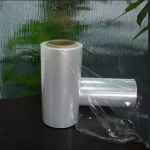Reasons and solutions for the production of non-flat hollow plates
In the process of producing hollow plates using a hollow plate production line, one common problem that can occur is that the produced plates are not flat. This can be a significant issue as it affects the overall quality and usability of the plates. There can be several reasons behind this problem, and in this article, we will explore some of these causes and offer potential solutions to rectify the issue.
Lack of proper material selection
The material used in hollow plate production plays a crucial role in determining the flatness of the final product. If the material lacks rigidity or has inconsistent thickness, it can result in non-flat plates. To address this issue, it is essential to select materials with uniform thickness and sufficient stiffness. Conducting quality checks on incoming materials and ensuring their compliance with specified standards can help prevent such problems.
Inadequate machine calibration
Another factor that can contribute to non-flat plates is inadequate machine calibration. The production line machinery should be regularly calibrated and adjusted to ensure precise operations. Improper alignment of rollers, belts, or other components can lead to variations in plate thickness and curvature. Regular maintenance and calibration of the hollow plate production line can help minimize deviations and produce consistently flat plates.
Inconsistent cooling process
The cooling process is crucial in ensuring the uniform flatness of hollow plates. If there are irregularities in the cooling process, such as uneven air circulation or insufficient cooling time, it can result in non-flat plates. To address this issue, it is essential to optimize the cooling process by providing adequate airflow and maintaining consistent cooling temperatures. Conducting regular inspections and adjustments to the cooling system can help achieve optimal plate flatness.
Poor handling and storage practices
Even if the plates are produced flat, improper handling and storage practices can lead to deformations and warping. Plates should be handled with care during transportation and storage to avoid bending or stacking them improperly, which can result in non-flat plates. Implementing proper storage racks or supports and following appropriate handling guidelines can help preserve the flatness of the hollow plates.
In summary, the production of non-flat hollow plates can be caused by various factors, including inadequate material selection, improper machine calibration, inconsistent cooling processes, and poor handling and storage practices. By addressing these factors and implementing appropriate solutions, such as selecting quality materials, ensuring machine calibration, optimizing the cooling process, and practicing proper handling and storage, manufacturers can achieve the desired flatness in the production of hollow plates. Consistently producing flat plates not only enhances the quality of the final product but also improves their practicality and usability in various applications.
.webp)
